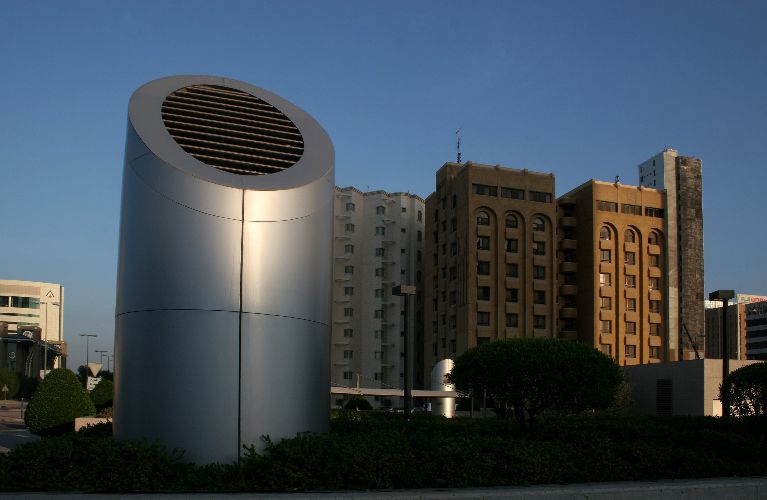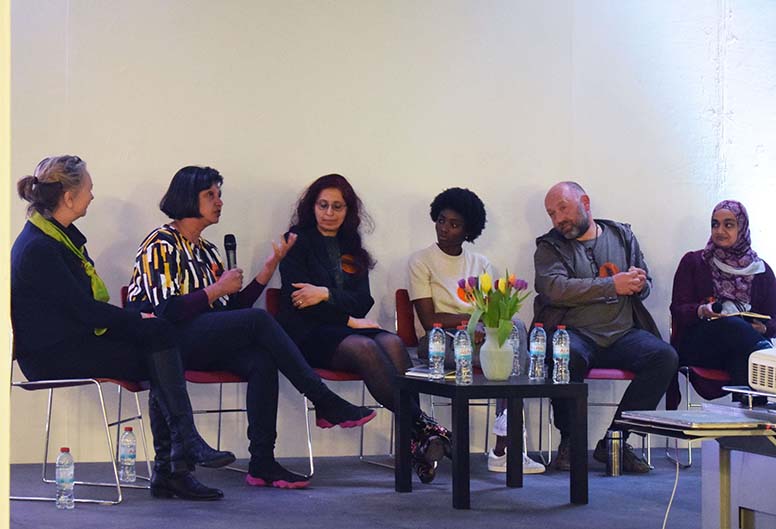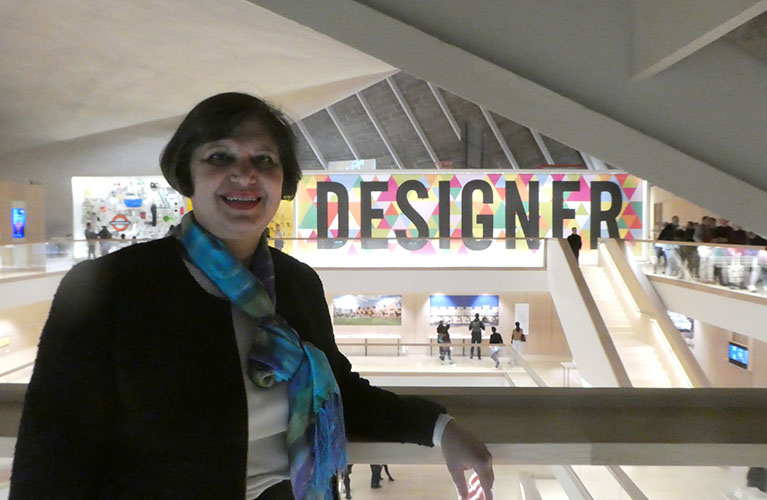Lifting the Fog: Kuwait Critical Culture
14 Jan 2005 - Blog
By Yasmin Shariff on 2005 conference paper
Architectural Criticism and Journalism: Global Perspectives, ed Mohammad Al-Asad with Majd Musa. ‘Critical Culture: Lifting the Fog on Kuwait City’ Aga Khan Award for Architecture, 2007 p181
We are in a cultural fog- the equivalent of a sand storm in the desert. A storm generated by the movement of labour and resources that is unparalleled in the history of mankind. Urban areas are rapidly expanding and the virtual world shrinking. News of the storm has immediate and serious political, economic, environmental and social consequences locally and globally.
Forces of globalisation have created an international culture where the experience of the modern city, be it Manhattan, Munich or Mumbai, have strong similarities. The same shops, the same glass towers and satellite dishes silhouetting the skyline and the same hamburger joints punctuating blocks of development. There are Chinatowns in LA and London and Indian corner shops in Bradford and Barcelona. Buildings designed in London by people from all over the world are being detailed in countries as far away as Vietnam and built for a mixed population by foreign workmen (often Eastern European). The sense of space and a cultural identity rooted in a particular place for an indigenous group of people is rapidly being eroded and the experience of cities is becoming much more homogeneous. It is not surprising that we are in a cultural fog and in shifting sands that obscures who and where we are.
Place making has become increasingly complex at a time when anything is possible. Growing a design that responds to the special nature of the site, its history, the client and the community is a difficult and risky business without any guarantees of success or indeed what it will look like. It is much easier to pluck a scheme from the international database and park it on the allocated lot. Facsimiles developments are being passed off as the real thing.
The famous city commentator and urbanist, Jane Jacobs when asked about what cities should be like responded that: It should be like itself. Every city has differences, from its history, from its site, and so on. These are important. One of the most dismal things is when you go to a city and it’s like 12 others you’ve seen. That’s not interesting, and it’s not really truthful. In his book The Rise of the Creative Class: and How Its Transforming Work, the American Economist Richard Florida highlights that ‘quality of place’ is an essential factor for a successful community. Florida highlights that replacing the old and authentic with the new and generic facsimiles of neighbourhoods or retail districts is proving to be unsuccessful.
Some of the basic lessons to be learnt from the work of Florida and Jacobs is the significance of cultural infrastructure -an essential ingredient for successful place making. Human beings are social animals we cannot survive without social interaction and cultural infrastructure facilitates or even engineers this interaction. Cities with poor cultural infrastructure are like houses without ‘living rooms’ ie prisoners of functionality. Business districts filled with skyscrapers and security guards are hostile territory to anyone who strays off the street. There is little fertile ground for a free exchange of ideas and the few places where this exchange is possible have prospered eg coffee houses and shopping malls. The most dynamic and interesting place in Kuwait City where people can meet informally is the shopping mall on the outskirts. In effect this shopping mall is a mini city and provides the experience of the old souk. The challenge for Kuwait City lies in using the lessons leant from this and other developments to transform and inform urban design on a much larger scale. Kuwait City is in danger of gaining a collection of very expensive skyscrapers that may be successful in their own right but are not integrated into the lifeblood of the city. Each skyscraper is like a room in a house without a living room.
People crave stimulation, not escape. The failure of many city centres can be directly linked to zoning laws that isolate retail, office and industrial development and developed suburban model as an ideal. Suburbia has kept people away from city centres and encouraged out of town living in developments that have poor cultural infrastructure. Suburbia was designed to provide an escape from the polluted and congested city. It isolates and fragments communities as they have a very poor provision of social spaces where diverse groups of people can interact. To build a community-one that can survive and prosper in this rapidly evolving age requires higher levels of quality of place than suburban models can provide. By its very nature suburbia is low density and disperses people. Successful places, as Florida describes, are teeming with people interacting in formal and informal ways, with a blend of cafes, sidewalk musicians, and small galleries and bistros, where it is hard to draw the line between performers and spectators. Here people can pack their time full of dense, high-quality, multidimensional experiences. The model of the medieval city, compact and dynamic, with industries relocated and streets cleaned up is once more an attractive option.
Cultural infrastructure can be injected into existing areas to enliven them and need to be an essential part of new developments. Libraries, media centres, galleries, museums, coffee houses etc are the living rooms or uban life. In these public places the community can nurture a sense of pride and belonging not only locally but even globally. .Bilbao could not have been propelled onto the world stage only with policies to clean up the city and sort out its physical infrastructure. This dying city has been jump started onto the world stage by its cultural infrastructure- the street life, music, dance as well as the ‘Guggy’. The term of endearment for the Guggenheim is itself an indicator of the sense of pride and belonging people have of this development.
At the Scully Seminar Speech Washington DC, USA, 26 January 2005 the Aga Khan succinctly summed up the challenge we face: ‘I believe profoundly that architecture is not just about building. It is a means of improving people’s quality of life. At its best, it should mirror the plurality of cultural traditions and the diverse needs of communities, both urban and rural. At the same time it must employ modern technologies to help fulfil desirable aspirations for the future.’
Lifting the fog on Kuwait City is a complex and difficult process. This seminar is a significant first step in taking stock with a critical intervention that starts to informs how to maximize the human, social and economic capital of this capital city. Clues of its own distinctiveness are apparent and could provide anchors for developing its cultural infrastructure. Islamic civilization has grown out of the desert. It shows a mastery of garden design, water engineering and energy efficient and passive energy systems that are still relevant today. The desert climate demands a different approach to urban planning than a downtown Miami model. Grass verges can be replaced by native species or desert plants that need little artificial watering. Skyscrapers competing for attention on the skyline could be linked by an expansion of the souk network and provide a socially stimulating and energy efficient passage through the city with innovative transport suited to the short ‘long distances. Institutions as diverse as the diabetes research centre, the poetry centre and the Tarek Rajaab Museum could break out of their confines and infiltrate the shopping malls and streets of the city.
At first sight it seems as though there is little history in Kuwait City. The peoples of this land were nomadic and it is not surprising that not much has been built in ancient times. New developments do not have to rely only on physical culture for their sources of inspiration. There seems little to use as a historic anchor, yet Kuwait is at the doorstep of ancient trade routes connecting India to Europe and East Africa. There are routes directly leading to the holy cities of Mecca and Medina and picturesque dhows sail into the docks. The sounds and smells of this port area have strong connections to Zanzibar and Broach, Yemen and Juba and evoke tales from the Arabian Nights, Sinbad and the Queen of Sheba.
Dynamic cities have active communities that are able to use the city as a stage to host events. Phoenix, Arizona may have its art walks, but perhaps Kuwaiti streets could compete with its poetic chants or rhythmic drumming. Culture is not a static historic entity; it is constantly changing and dynamic. What is important is to nurture creative talent and maximising human capital by capturing people’s imagination and inventiveness and facilitating their participation in civil society.
The challenge for architects, developers and city authorities is to capture the essence of the place and not mimic the past or foreign exotica. There is a need to recognise the critical role of culture and to make it an integral part of the urban infrastructure. Without a serious consideration of cultural infrastructure cities are nothing more than a collection of soulless buildings vying with each other in the latest architectural styles and fads vulnerable to extinction when fashions change and people leave because they crave something more genuine and dynamic.
Cultural infrastructure is not merely about designing mixed use urban areas with coffee shops, theatres and boulevards. The physical spaces are stage sets, props which are useless without getting engagement and dynamic participation. There is no single solution – a one size fits all- each area will have its own distinctive assets. Nothing is set in stone. The shifting sands of time are forever with us.









